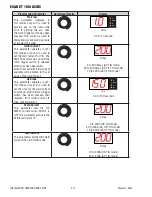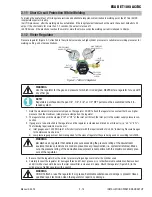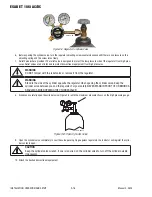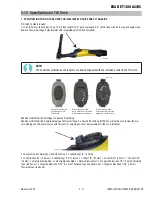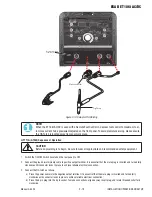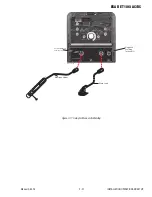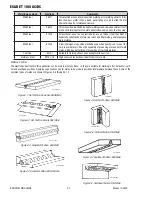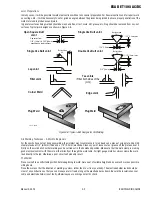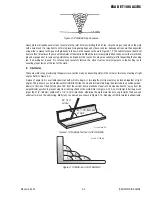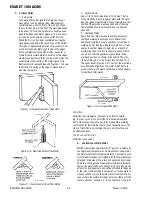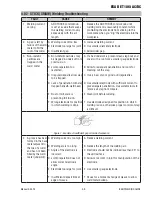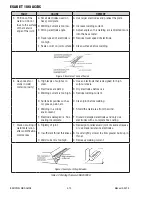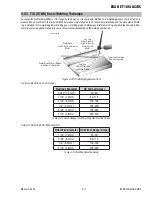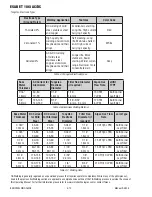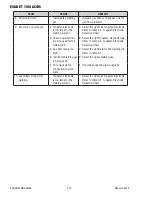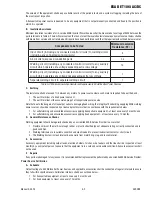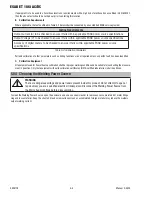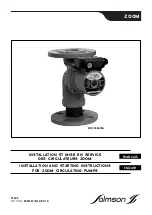
ESAB ET 186i AC/DC
Manual 0-5425
4-3 BASIC WELDING GUIDE
Joint Preparations
In many cases, it will be possible to weld steel sections without any special preparation. For heavier sections and for repair work
on castings, etc., it will be necessary to cut or grind an angle between the pieces being joined to ensure proper penetration of the
weld metal and to produce sound joints.
In general, surfaces being welded should be clean and free of rust, scale, dirt, grease, etc. Slag should be removed from oxy-cut
surfaces. Typical joint designs are shown in Figure 4-9.
Gap varies from
1/16” (1.6mm) to 3/16” (4.8mm)
depending on plate thickness
Joint
Open Square Butt
1/16” (1.6mm) max
1/16” (1.6mm)
Single Vee Butt Joint
Not less than
70
°
Double Vee Butt Joint
1/16” (1.6mm)
Lap Joint
Tee Joints
(Fillet both sides of the
joint)
Edge Joint
Fillet Joint
Corner Weld
Plug Weld
Plug Weld
Not less than
70
°
Single Vee Butt Joint
Not less than
45
°
1/16” (1.6mm) max
Art # A-10672
Figure 4-9: Typical Joint Designs for Arc Welding
Arc Welding Technique - A Word to Beginners
For those who have not yet done any welding, the simplest way to commence is to run beads on a piece of scrap plate. Use mild
steel plate about 1/4" (6.0mm) thick and a 1/8" (3.2mm) electrode. Clean any paint, loose scale or grease off the plate and set it
firmly on the work bench so that welding can be carried out in the downhand position. Make sure that the work clamp is making
good electrical contact with the work, either directly or through the work table. For light gauge material, always clamp the work
lead directly to the job, otherwise a poor circuit will probably result.
The Welder
Place yourself in a comfortable position before beginning to weld. Get a seat of suitable height and do as much work as possible
sitting down.
Place the work so that the direction of welding is across, rather than to or from, your body. The electrode holder lead should be
clear of any obstruction so that you can move your arm freely along as the electrode burns down. Be sure the insulation on your
cable and electrode holder is not faulty, otherwise you are risking an electric shock.


